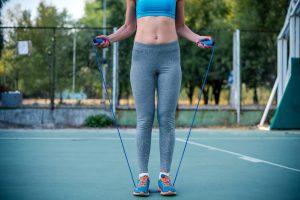
When it comes to weight loss exercise, some people think that aerobic exercise burns more calories, and others think that strength training is better for reducing fat.
So what kind of exercise is the best one for weight loss? You must know the No.1.
“Best weight loss exercise” ranking
Recently, experts from theAmerican Council on Exercise (ACE) have listed the following weight loss rankings based on calories burned.
No.1: skipping rope
It burns 667 to 990 kilo calories per hour (at a rate of 120 times of jumping per minute).
Rope skipping has a good effect on improving coordination, strengthening the calf, core muscles and ankle joints, improving posture and enhancing cardiovascular endurance.

In addition, it also helps to increase bone density and prevent bone loss and osteoporosis.
The best way to start skipping rope is to jump slowly first, and then jump quickly after your fitness improves, for 20-30 seconds each time. Once you have mastered the wrist force technique, you can increase the speed and duration to burn more calories.
No.2: sprinting
It burns 639~946 kilo calories per hour.
Whether on the treadmill, on the track, or on the sidewalk, sprinting forward at the fastest speed during a sprint exercise can consume a lot of calories.
By alternately sprinting and jogging, cardiovascular endurance can be enhanced, thereby burning fat. In order to get the best weight loss effect, it is recommended to sprint for about 20 seconds.
During jogging, the intensity is reduced by half, but the time has to be doubled. If your body permits, you can also sprint up to the slopes or stairs, and be careful of the steps, which will counter gravity and increase strength.
No.3: Taekwondo
It burns 582~864 kilocalories per hour.
Taekwondo fully exercises the upper limbs and core muscles, and has little impact on the legs. It is suitable for people who don’t like skipping rope or have knee injuries.
Practicing Taekwondo can improve cardiovascular function, increase muscle strength and agility, and improve body balance and coordination. In addition, the hitting action can also play a good role in decompression.
Pay attention to master the boxing method before the footwork practice, and the rest time between each exercise group is as short as possible, such as practicing 90 seconds and rest 30 seconds.
No.4: spinning bike
It burns 568~841 kilocalories per hour.
Riding a spinning bike can increase the strength of the knees and hamstrings. If your knee hurts while running or your knee problem is recovering, riding spinning bike is the right choice.
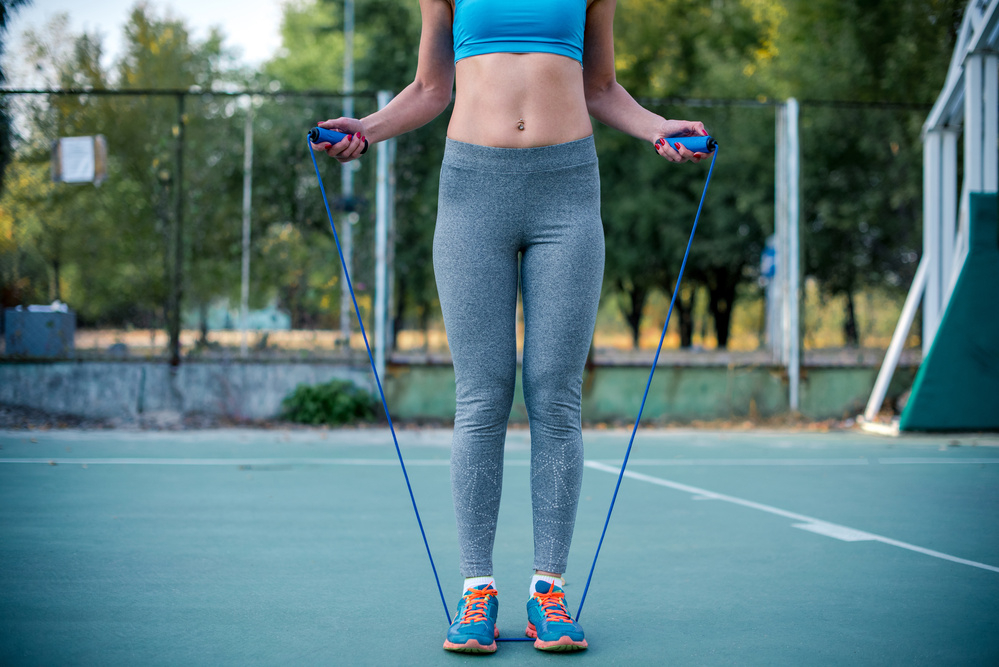
Using spinning bikes for high-intensity interval training, such as alternating fast cycling for 30 seconds and mid-speed cycling for 30 seconds, is particularly effective for weight loss.
In order to get the best weight loss effect, you should ensure that you maintain a good posture during the ride: straighten your chest, keep your back straight, shoulders back and naturally down.
No.5 running
It burns 566 to 839 kilo calories per hour (at a speed of 1.6 kilometers per 10 minutes).
Running can exercise the large muscle groups of the legs. If you just start running, you can use the interval training method, that is, alternate jogging and walking at a brisk speed. The time ratio of the two is 1:2.
No.6: walking with weight
It burns 476~705 kilo calories per hour.
This exercise not only improves body posture, but also exercises core muscle groups. For people who gain weight with age, this systemic exercise can effectively burn fat.
When walking, shoulders down and back, hold a dumbbell or a mineral water bottle filled with water in both hands. Place your arms on your side naturally, open your chest, tighten your abs, squeeze your glutes, and mobilize your back. The power of the platys-ma is involved in exercise.
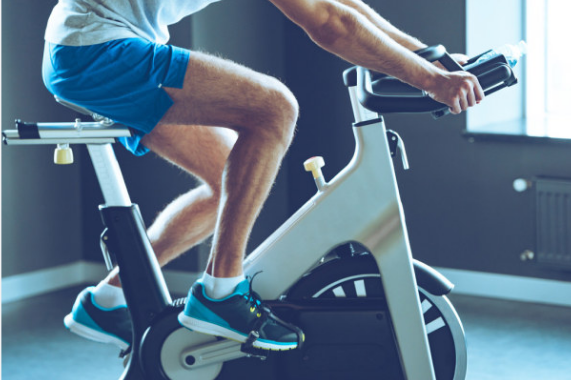
First lift the heavy object above the head and walk as fast as possible, and the time is within the self-bearing range; then put the heavy object on the side of the body, or walk as fast as possible, and the time is within the self-bearing range; rest for 1 minute , Repeat the above process.
No.7: climbing stairs
It burns 452~670 kilo calories per hour (at a speed of climbing 77 steps per minute).
If you can’t climb stairs by sprinting, climbing stairs slowly can also burn calories and help lose weight.
In addition, the leg and buttocks muscles were exercised, which is particularly beneficial for sedentary people. In order to exercise the muscles of the upper limbs at the same time, you can hold light dumbbells or a mineral water bottle filled with water when climbing stairs.
Skipping rope can exercise whole body
As a “jumping exercise”, many people think that rope skipping can only exercise leg muscles, but it is not.
Because skipping requires the coordination of rocking arms and jumping, many parts of the whole body such as neck and shoulder, upper chest, upper arm, elbow and wrist can be exercised to:
Including the ankle, knee and hip muscle groups; it can also strengthen the coordination of the hands, feet, and eyes; if the intensity is high, it can also practice the cardiopulmonary with one breathing
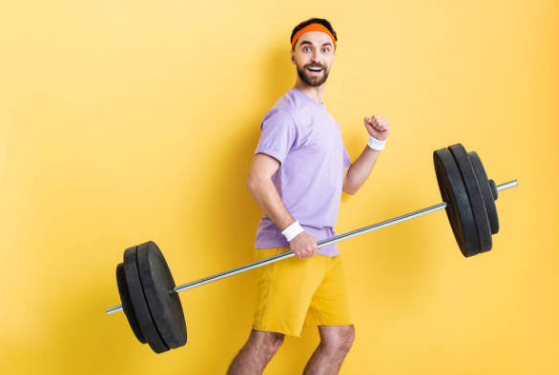
Rope skipping has different exercise benefits for different group of people.
For adolescents: help grow taller
Adolescents are at the peak of bone growth and development, which is also a height sensitive period.
Rope skipping can stimulate the development of the epiphyses of the knee and ankle joints, thereby promoting the longitudinal growth of the body, making the lower limbs more slender, accelerating the circulation of blood vessels in the brain, stimulating brain development, and improving memory ability.
For young and middle-aged: prevent chronic diseases
Young and middle-aged people are often “sedentary people”, with poor blood circulation in the lower limbs, decreased synovial fluid secretion in the joint cavity, and increased risk of joint damage.
Skipping rope helps relax body muscles, enhance lower limb circulation, improve cardiorespiratory function and strengthen immunity, thereby preventing obesity and chronic diseases.
For old people: slow down muscle atrophy
For the elderly with good cardiopulmonary function and good physical coordination, skipping rope with appropriate strength can help reduce bone loss, prevent osteoporosis and fractures, stimulate muscles and slow down atrophy.
For over-weighed people: help lose weight and shape body
The data shows that skipping 140 times per minute, 10 minutes of exercise effect is equivalent to 30 minutes of jogging; if you insist on skipping for 1 hour, you can consume about half a catty of roast duck to reduce fat.
At the same time, skipping rope helps increase muscle elasticity and is the best “shaping” tool.
Shipping rope: jumping right to lose weight, jumping wrongly and hurting the knee
For starters or those who want to try skipping, these problems most often bother them.
What to wear with and Where to skip
In order to achieve a good exercise effect, what to wear and where to skip also count a lot.
01. Wear soft and light high-top shoes to avoid ankle injury.
02. The rope should be with proper hardness and thickness. For starters, use a hard rope. You can change it to a soft rope when you are skilled.
03. Choose moderately soft lawns, wooden floors, and muddy soil ground to skip. Don’t do it on hard concrete ground to avoid damage to joints and cause dizziness.
04. Relax the muscles and joints when skipping rope, and coordinate the toes and heels to prevent sprains.
05. Do warm-up exercises for feet, legs, wrists, and ankles before skipping rope, and do some relaxation exercises after.
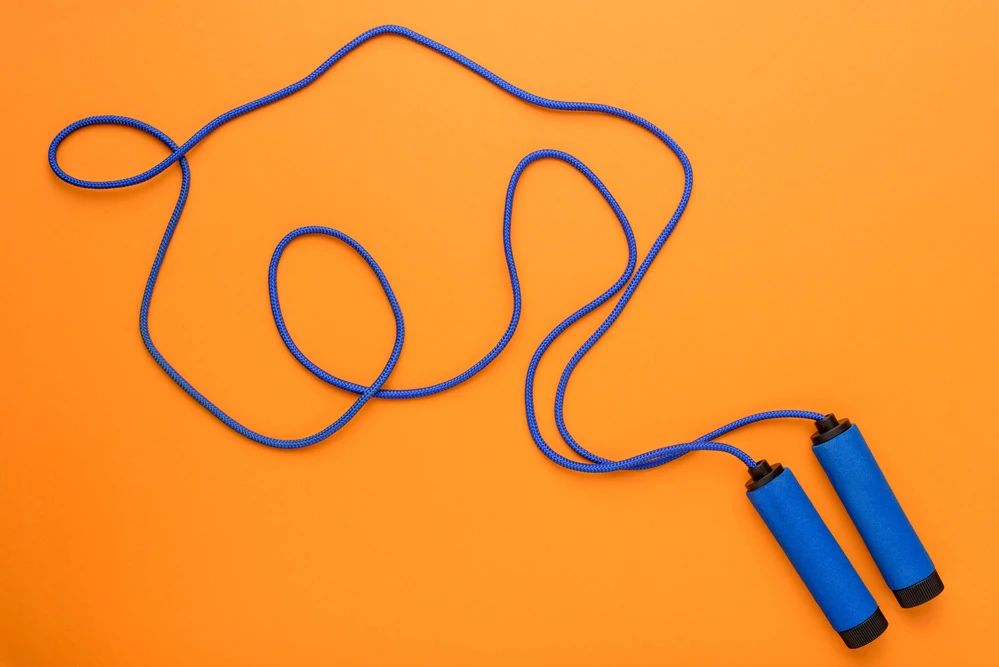
Right & wrong posture of skipping rope:
Many people think that skipping rope is not good for the knees. In fact, when the posture is right, the ankle joint will be stressed the most when the rope jumps to the ground, but the impact on the knee joint will be small.
Right posture:
The body is upright and relaxed, looking forward, and the forearm is drooping and clamping;
Hold the skipping rope handle with both hands, palms facing forward;
Step on the middle of the rope with your forearms parallel to the ground and the best length when the rope is straightened;
Swing the rope with the wrist and land on the forefoot.
The following 5 common wrong jumping methods may cause damage to the knee joint.
01. Jumping too high and high impulse: The height of skipping rope should be 3~5 cm.
02. Uneven force damage to joints: It is recommended that beginners jump together and try the fancy jumping method after proficiency.
03. Knee injury caused by straight legs: When skipping rope, the knee joint should be kept naturally bent, and there is no need to stretch it straight.
04. Humpback probe is easy to strain: a long-term humpback probe will increase the tension of the body, and it will easily lead to strains, sprains or ugly shapes in the long run.
05. Anxious for success is the most harmful: Blindly increasing the amount and time of exercise will lead to long-term stress on the leg joints and easy injury.
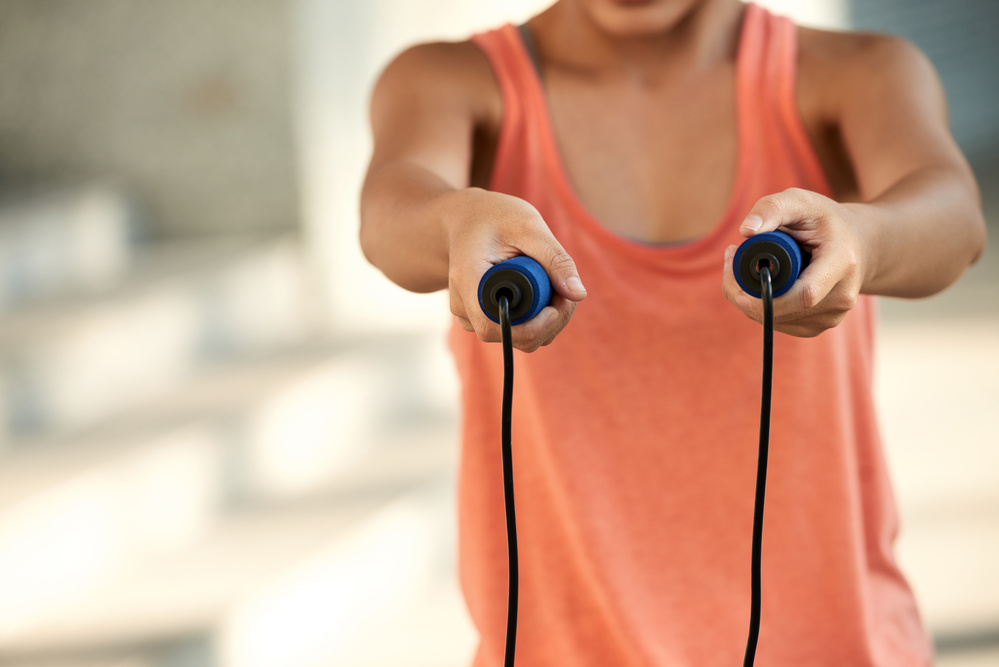
Recommended frequency of skipping rope:
Jump rope 3~5 times a week, 30 minutes each time. Because skipping rope has a greater impact on the lower limb joints, 1 to 2 rests should be arranged during this period, and the intensity should be controlled at a heart rate of 120 to 130 beats per minute or the body should sweat slightly.
Special Note
Although rope skipping is highly universal, it is not suitable for people who are too old, have inconvenient legs and feet, or have cardiovascular and cerebrovascular diseases, as well as hypertension, osteoporosis and other degenerative bone and joint diseases.
For people suffering from knee joint disease, skipping rope may increase the pain. If these people are willing to skip rope, it is recommended to consult a doctor first.
Comments